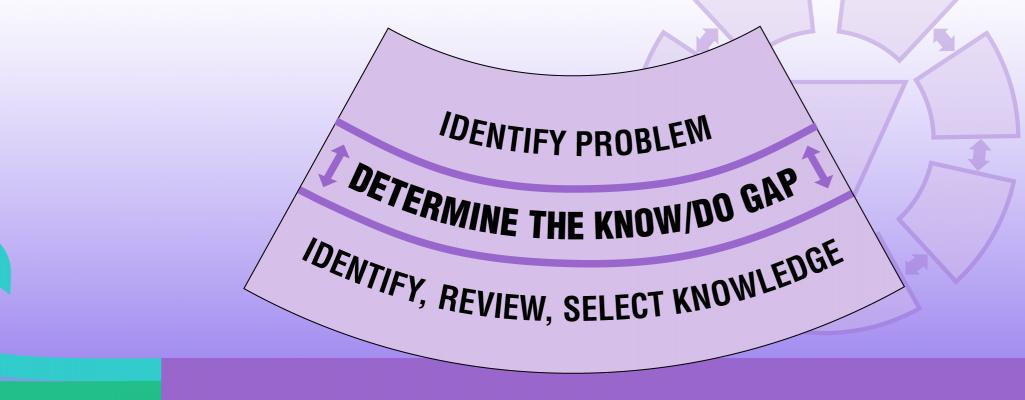

What is the phase 'Identify the Problem'?
This phase is typically the starting point when you and your change team have decided that you desire to make an improvement to an existing practice, infrastructure, or intervention (e.g., treatment program, assessment) that you currently use or have in your work setting (Kitson & Straus, 2013).
What if I already know what I want to change in practice?
If you already identified the knowledge, or in other words, the evidence-informed practice or intervention that you want to integrate into your practice, then this phase may help you review the practice gap in your setting to confirm that the knowledge you chose can fill this gap.
There are three components to this phase
- Identify the problem: Problems are identified differences between existing practices versus the desired practices in your setting.
- Determine the knowledge-to-practice gap: This ‘gap’ refers to the difference between the knowledge of what we know works (via evidence) and actual practice. Ideally, this type of knowledge should come from high-quality practice guidelines or knowledge syntheses (e.g., systematic reviews). Once you define a knowledge-to-action gap, you can identify the practice change or intervention that can minimize the gap.
- Identify, review, select knowledge: Knowledge refers to the best available evidence that you can use to apply to your problem and address the knowledge-to-practice gap that you and your team identified. Evidence can be in the form of best practice guidelines (BPGs), knowledge syntheses, or policies.
SOURCES: Graham et al., 2006; RNAO 2012; Straus et al., 2009.
Why is the phase 'Identify the Problem' important?
This phase is important because it will help you and your change team to:
- Understand the extent of the problem.
- Articulate the gap or need.
- Detail what needs to change in order to address the problem or fill the gap and improve outcomes.
- Provide a clear rationale for addressing the problem that can be communicated to others.
- Select a suitable knowledge tool/product to address the need.
- Prioritize the most important problems or gaps to address.
